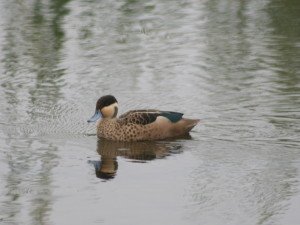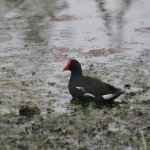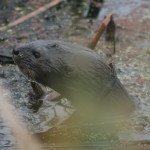Chatty Saltpans, Swartkops Estuary 0
The Swartkops Estuary in Port Elizabeth is well-known as one of South Africa’s 112 Important Bird & Biodiversity Areas (IBAs) and while the river and mudflats have the greatest density of birds and hog the limelight as the most natural areas, my sunset visit on December 30 was to the salt pans and threw up a special that is often difficult to find elsewhere.
The Chatty River flows from the west into the Swartkops River and alongside it, next to the R367 main road, there are commercial saltpans which can provide quality foraging opportunities for many birds, especially when the salinity and water level are just right for a host of invertebrates to be crawling around in the benthos.
The elegant flamingos – both Greater and Lesser – immediately catch the eye and I was also drawn to the Pied Avocets, one of my favourite birds, sweeping and scything around in the water.
But dotted around the pan were smaller birds – the Blacknecked Grebe.
The Chatty Saltpans hold globally significant numbers of this uncommon nomad, which has the propensity to suddenly colonise a flooded area and start breeding. There are usually good numbers of this cute little diving bird at Swartkops though, and I did not notice any birds in breeding plumage, so perhaps they were moulting, with the widely-distributed Blacknecked Grebe known to utilise saline lakes overseas for this purpose.
Another special that can be picked up at the Swartkops Estuary is the Hartlaub’s Gull, which has a recently-established breeding colony in the area. It was previously considered a bird of the Western Cape, its distribution tied to that of Kelp, with only vagrant birds moving east of Cape Agulhas, and it interbreeds with Greyheaded Gulls in this river valley. Being omnivorous, it seems to have adapted to new foraging opportunities around human settlements.
Nicely built-up embankments between the pans allow one to approach the vulnerable Flamingos and their friends reasonably closely as they continue their search for invertebrates, and other birds that have adapted well to man-made wetlands were also busy foraging for their dinner in the gathering gloom – Blackwinged Stilt, African Spoonbill, Cape Cormorant, Kelp Gull, Egyptian Goose, Blacksmith Plover, Cape Wagtail and Sacred Ibis.
Where are the Chatty Saltpans?
Sightings list
Greater Flamingo
Kelp Gull
Pied Avocet
Blacknecked Grebe
Blackwinged Stilt
Lesser Flamingo
Egyptian Goose
Cape Cormorant
Blacksmith Plover
Hartlaub’s Gull
Cape Wagtail
Sacred Ibis
African Spoonbill



